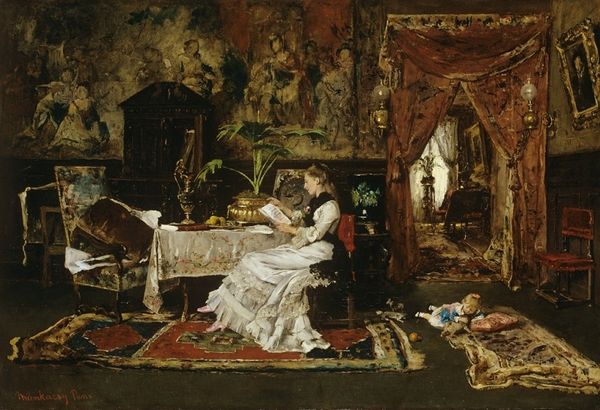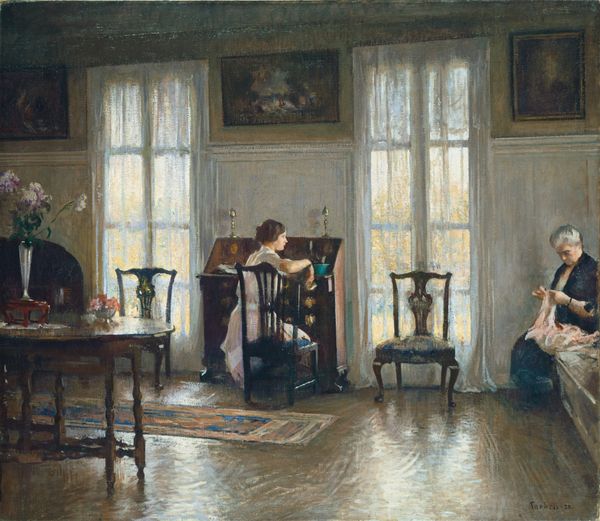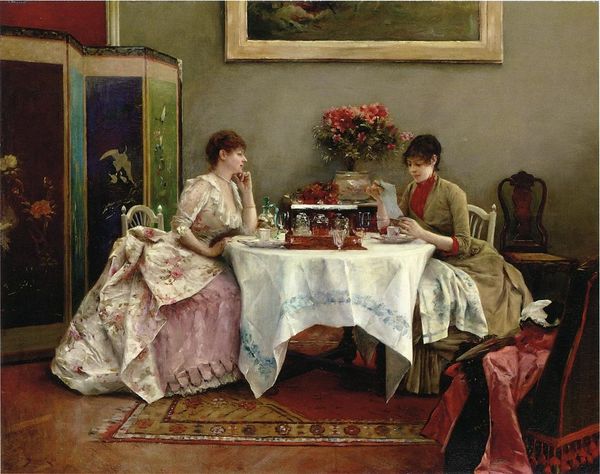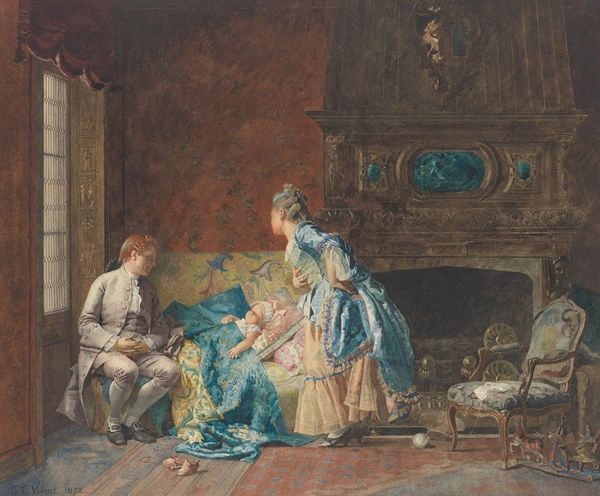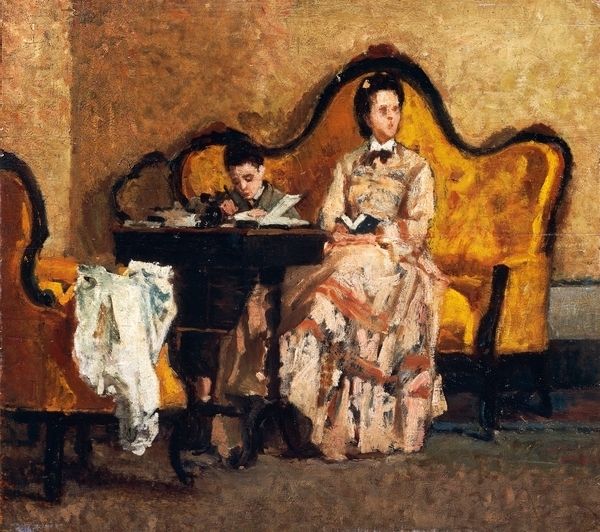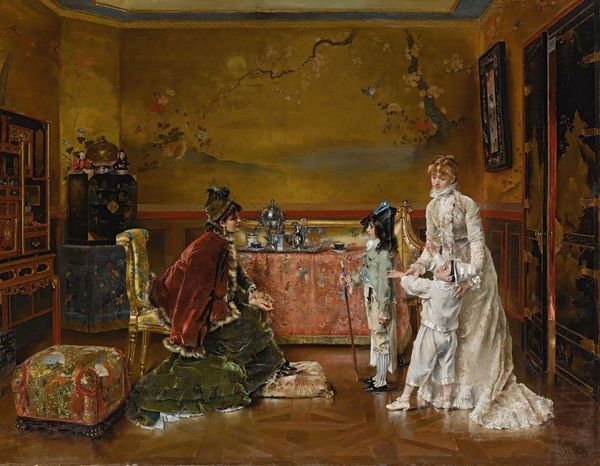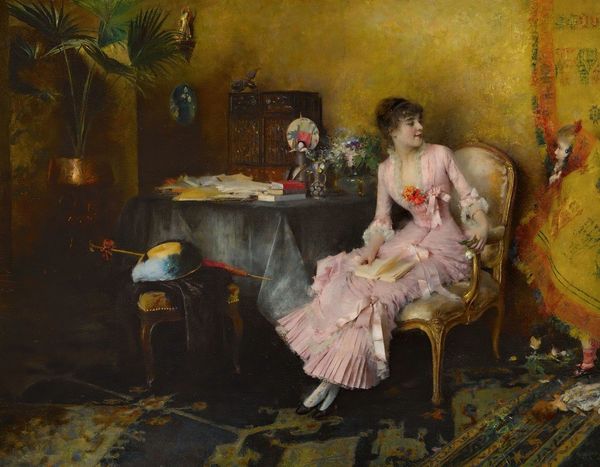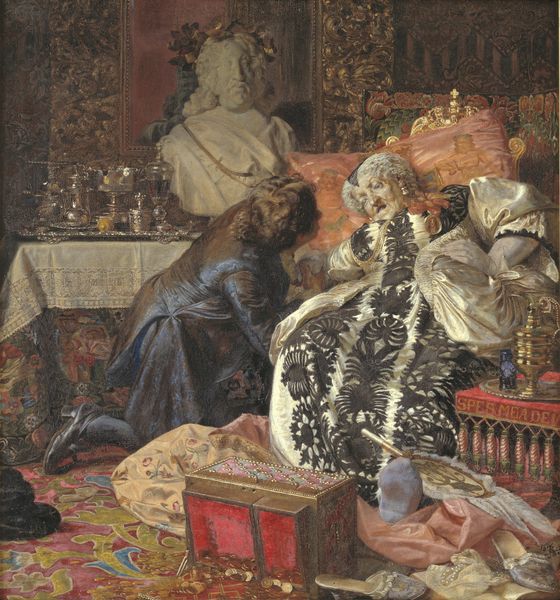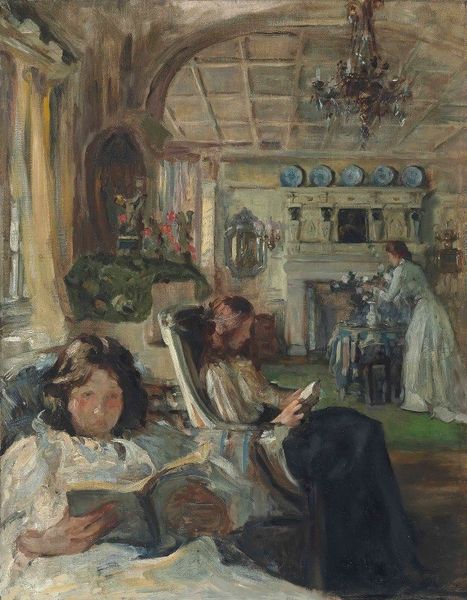
Dimensions: 35 x 46 in. (88.9 x 116.8 cm)
Copyright: Public Domain
Curator: Mihály Munkácsy, a Hungarian painter who made a splash in Paris, gives us “The Music Room,” created in 1878. It's currently housed right here at the Metropolitan Museum of Art. What strikes you about this scene? Editor: Initially, I’m sensing an underlying tension. It's almost like a staged photograph right before the smiles fade and real life kicks in. It feels both posed and performative, but there's a subtle weariness in some of the figures, especially that lovely drowsy dog in the corner. Curator: Exactly. There's an intimacy mixed with formality, right? The composition itself is intriguing – Munkácsy uses oil paint in a very rich, almost impasto-like way in areas, yet the overall tone is quite subdued. He is trying to capture not only the likenesses of his models but also the mood of a specific social class. Editor: Speaking of class, this domestic interior absolutely screams "bourgeois respectability," but it is masking a sense of unspoken gender dynamics. Look at the way the women are positioned; some are at leisure while others entertain or support that leisure. It feels as if everyone's acutely aware of their role in the tableau. Is music just an entertainment here, or something more subtle, maybe a conversation? Curator: A conversation! That's it. The details invite us into their world. The piano seems to act as a central, almost theatrical point, right? As an artist, I think he did this intentionally; perhaps this tableau isn't so staged after all but represents genuine emotion. Editor: Munkácsy painted this shortly after the end of the Paris Commune, a time of huge upheaval in France. The painting might even reflect this historical undercurrent. Perhaps he's using a seemingly innocent domestic scene to imply more profound societal concerns? Curator: Absolutely. He does create this layered narrative that asks viewers to consider their place in it. He captured a cultural snapshot of Paris society during a time of significant political transition. Editor: The artist presents more than just wealth on the canvas; there are these deeper levels we can unpack and reflect on. What I see beyond the representation, however, is how social interactions, even amongst women, are structured and orchestrated during the end of the 19th century. Curator: I really felt moved revisiting “The Music Room” by Munkácsy again and hearing what this painting suggests for you, that maybe there are some conversations better told than unseen.
Comments
No comments
Be the first to comment and join the conversation on the ultimate creative platform.
